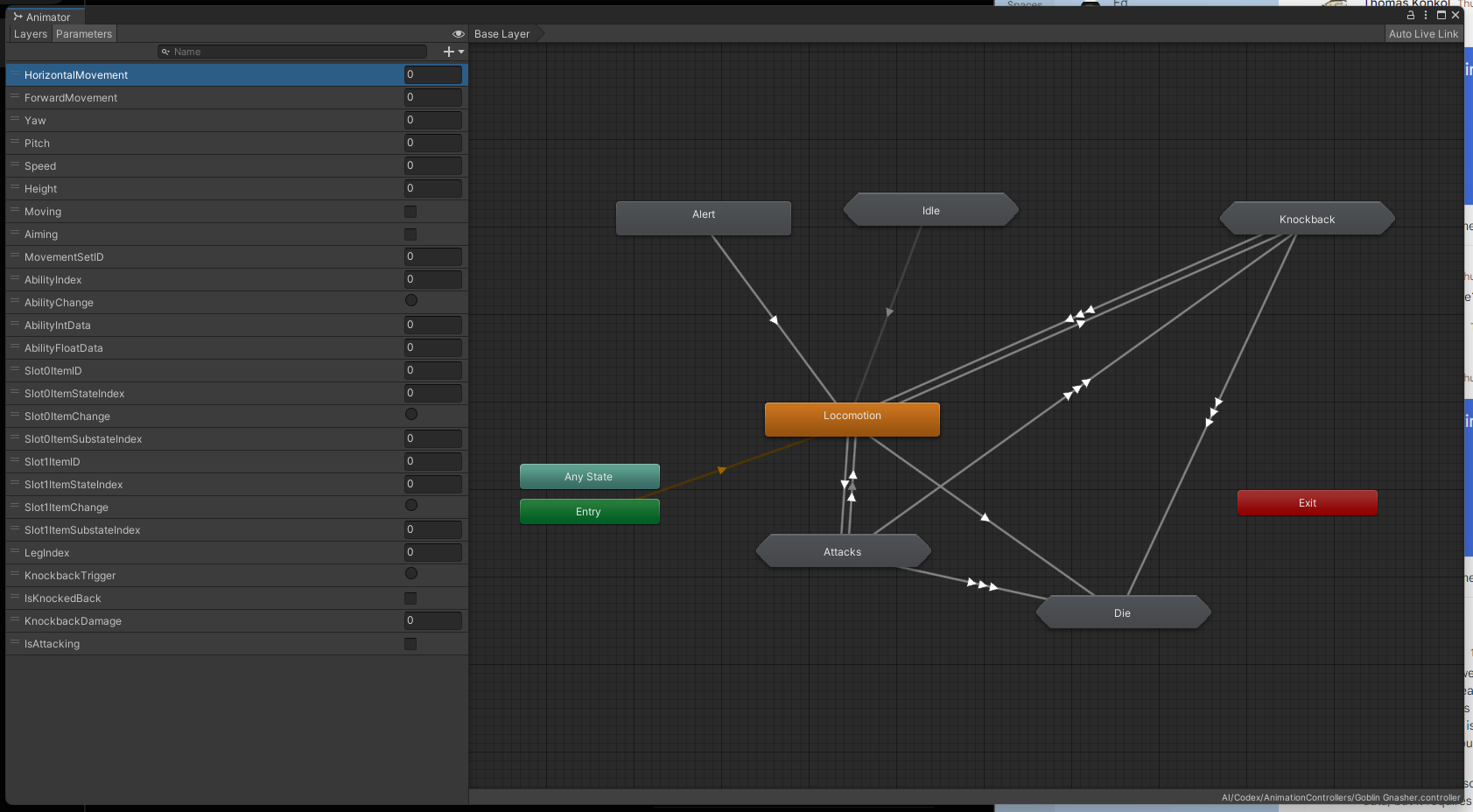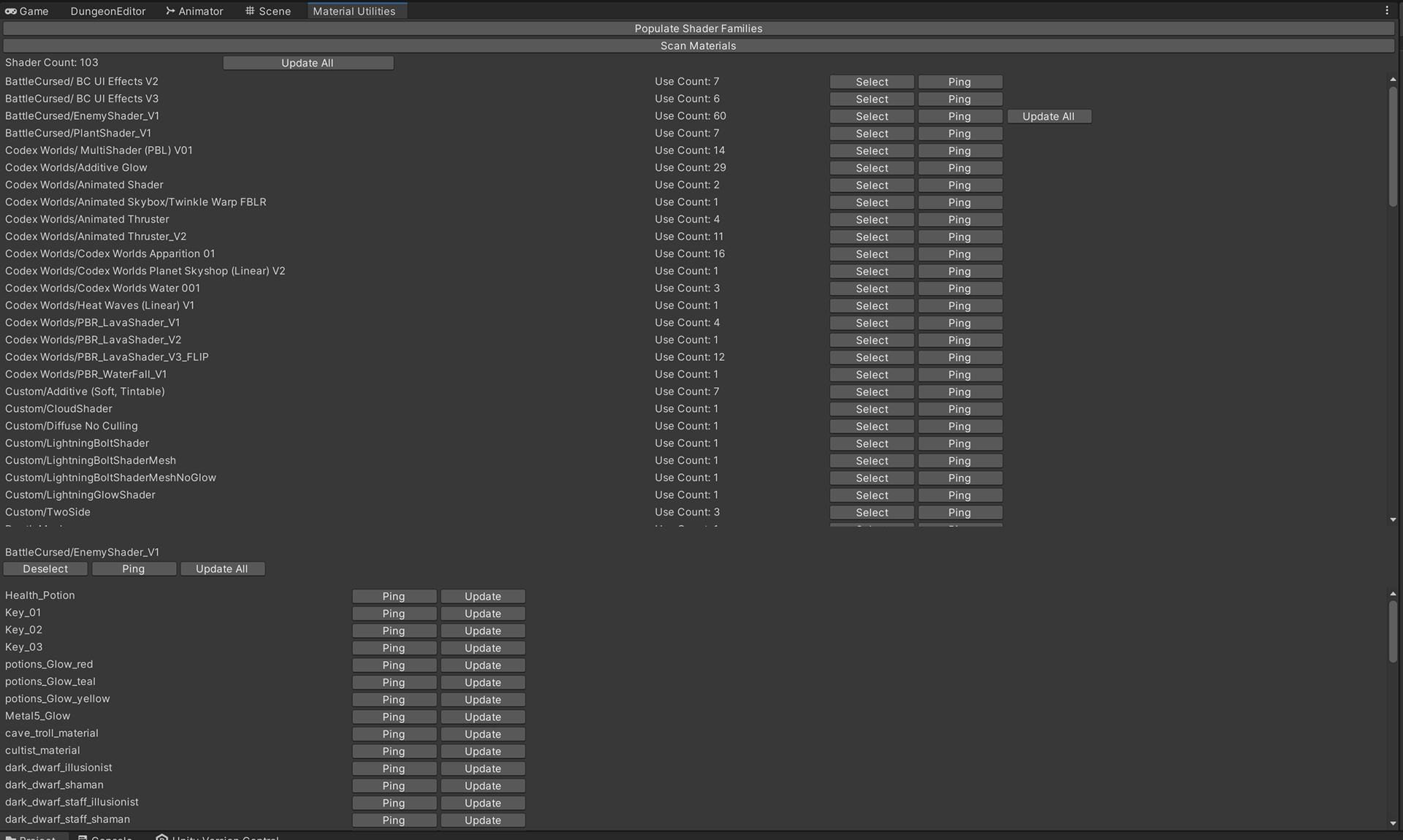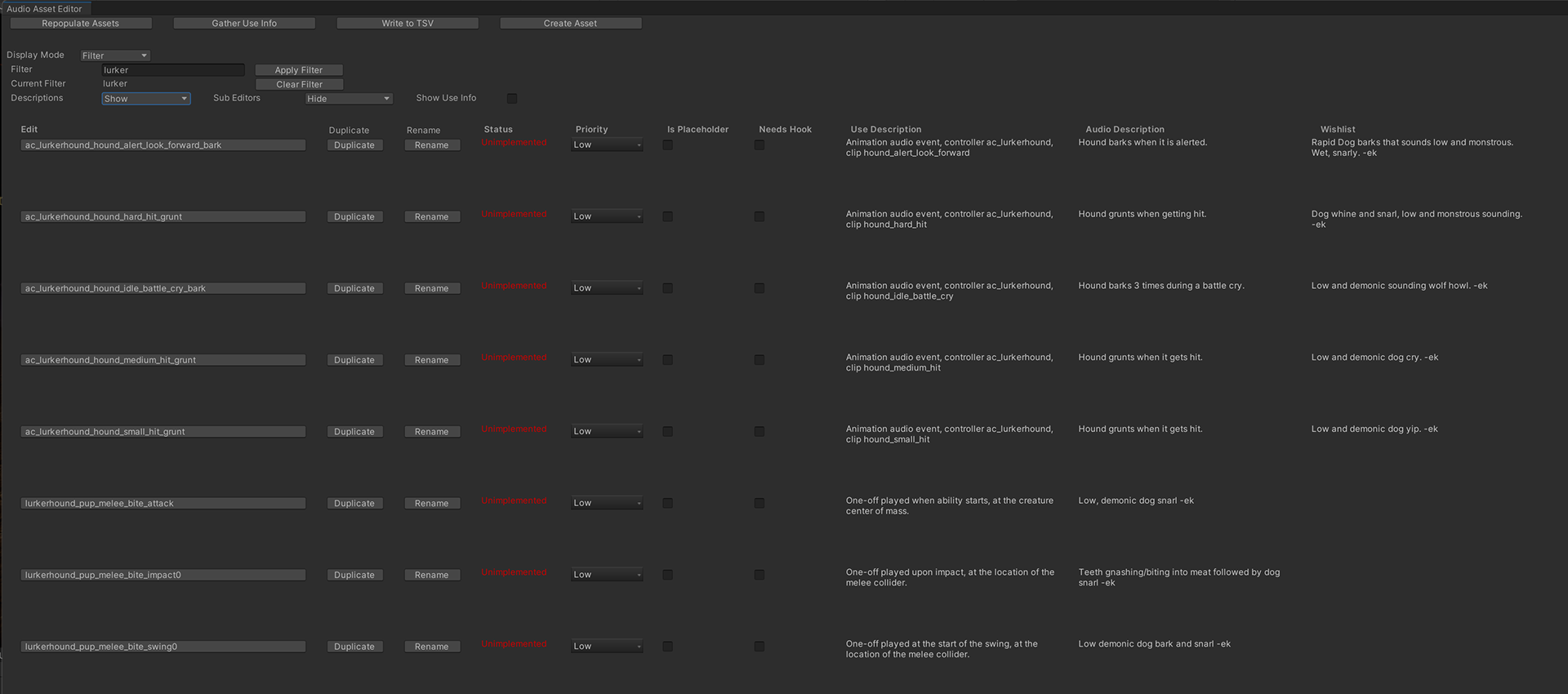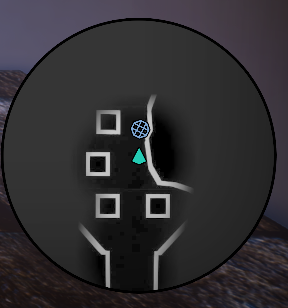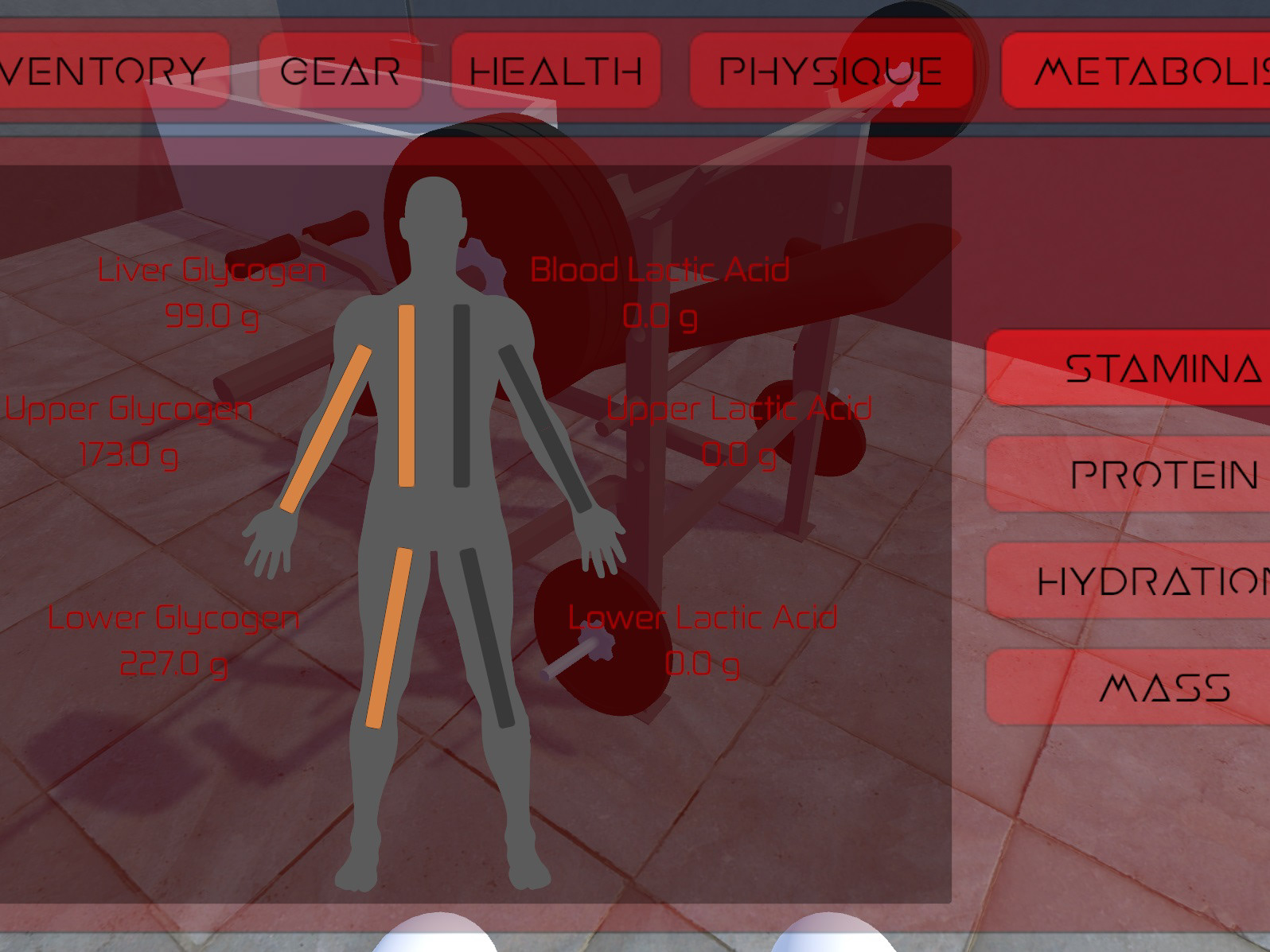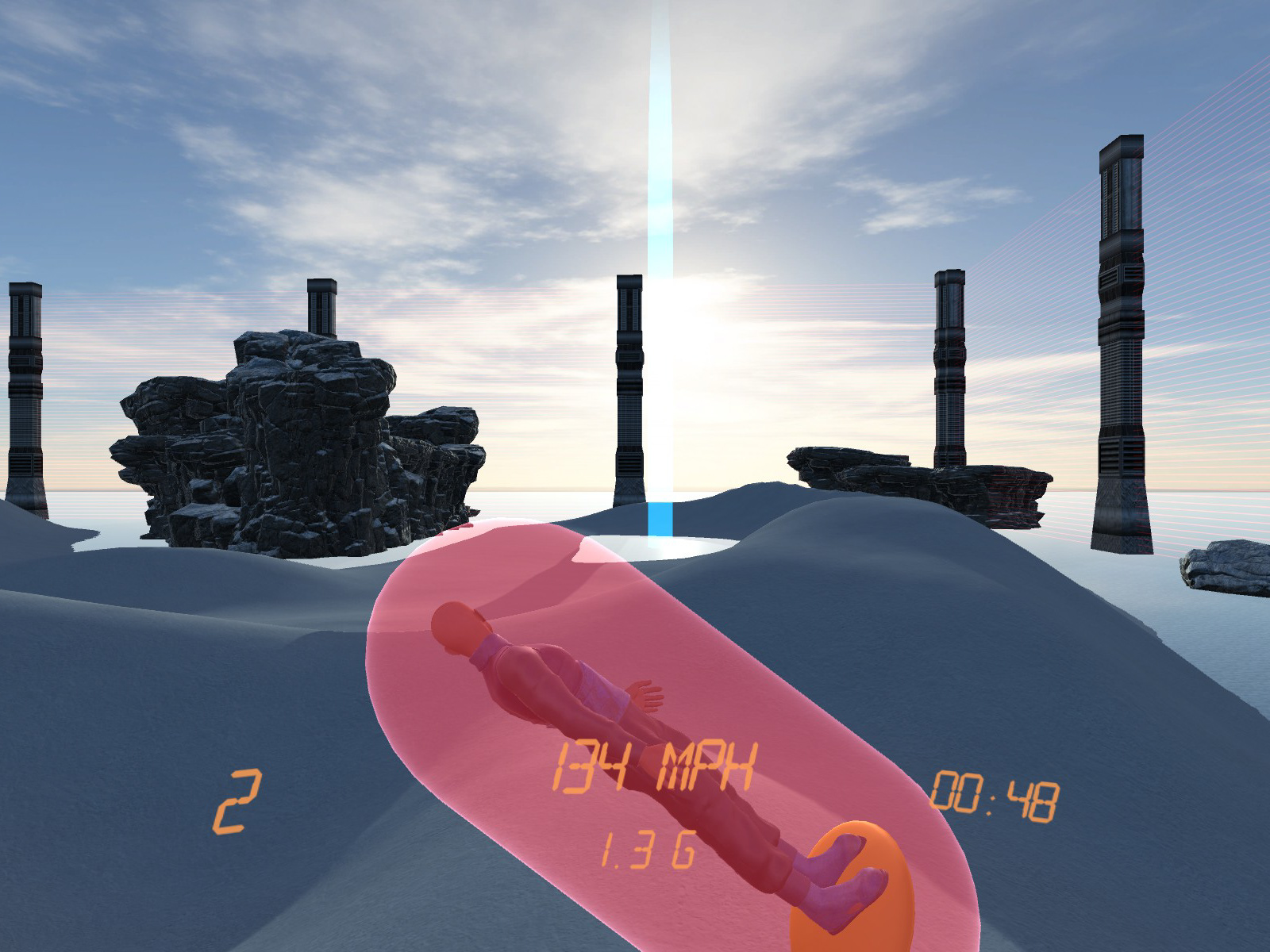DreadReign: The Shadow Fortress is a first person, squad based dungeon crawler currently under development by Mechanical Moonworks, an indie team that I joined in 2018 as part of the programming team. The game puts the player into the shoes of a party of four heroes that can be cycled through in real time, giving the player access to multiple sets of abilities and gameplay styles, similar to changing weapons in an FPS. I am currently their Development Director, contributing gameplay programming, tools programming, design input, and technical art support as well as coordinating a growing team of approximately 15 programmers, artists, and designers.
I have added numerous systems to the game since joining the team, as well as augmenting and/or refactoring the majority of the code base. Some highlights include:
○ Upgrading the project from Unity 5.6 to Unity 6
○ Converting hundreds of materials and rewriting roughly 70 custom shaders to make use of Unity's High Definition Render Pipeline, including writing an editor tool to keep track of which materials and shaders needed to be converted, and automate parts of the conversion process
○ Creating an HDRP-compatible minimap with fog of war
○ Developing an enemy character controller to replace a third party asset that was incompatible with more recent versions of Unity, that could reconcile root-motion animation with physics-based character interactions
○ Developing a physics-based character controller for the player
○ Developing a lightweight, soft body collision system for inter-character collisions that allows the physics-based player character controller to interact with the root-animation-based enemy character controller using simulated forces and momentum
○ Consolidating all enemy behavior trees into a single behavior tree for better maintainability
○ Adding more sophisticated enemy behaviors, like patrol, guard, wandering idle, and fleeing
○ Developing a flexible, data-driven system for character effects (like stun, damage, healing, etc.) based loosely on Bethesda's scripted effect system
○ Developing an in-house audio manager and audio tools to replace Wwise audio middleware, which included an Audio Asset Editor that kept track of sound hooks, their associated audio clips, and other parameters and metadata needed to define SFX and music
○ Developing editor tools to visualize player and enemy statistics, like damage output and survivability, to aid in design and balancing, as well as additional tools to edit stats and information
○ Designing and implementing new hero abilities
○ Consolidating projectile-related code into a single data-driven class that supports realistic parabolic trajectories, target-seeking projectiles, 3D trajectory previews, aiming calculations for enemy targeting, inter-projectile collisions, a lightweight, raycast-based system for movement and collision detection, and easy coordination of VFX across different phases of a projectile's lifetime
○ Designing and implementing an elemental combo system for afflicting enemy targets with unique effects and explosions that arise from combining different damage types, as well as an editor tool for creating and managing those combos

